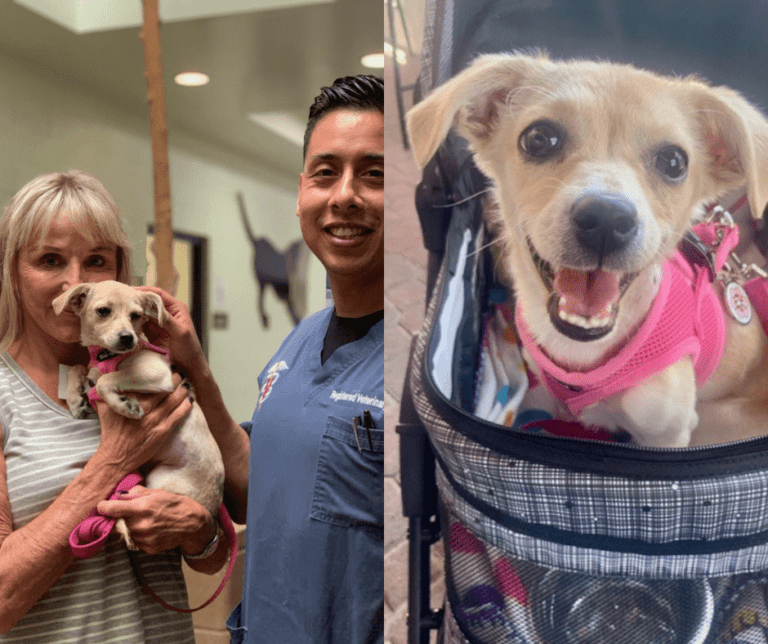Why Pet ID is Crucial to the Survival of Your Pet

If you’re like me, you probably have more than one collar for your cat or dog. I like to change out my pet’s collar to wash it after they have a bath, or just for a change of look for a new season. One thing I always make sure of, though, is that their ID tag gets immediately transferred to the new collar, and the new collar immediately gets put around their neck. I never, ever, let my dogs go without their collars and tags, even if they’re just hanging out in my house. Why? I live in California where there is a huge population of homeless pets and, consequently, huge numbers of euthanasia at my local shelters. All my dogs are microchipped and registered of course, but a microchip is not visible to the naked eye, and if my dog gets lost, I want to make it as easy as possible for the finder to return my dog to me. That’s why I’m fanatical about pet ID.
A “tag” doesn’t even have to be stainless and engraved. Get a cheap collar and a sharpie and write the info right on the collar. With just this simple step, you can save a pet’s life.
Pet ID is the first, most important step to getting your pet home
It seems like keeping ID on your pet should be a no-brainer, but many people still overlook this crucial step or misunderstand why it’s necessary. I’ll give you an example. I had just stepped outside to walk my dog-reactive pooch, Boo, when I saw a loose dog running up the street towards me. With no owner in site, I hustled Boo back into my house and grabbed a leash.
Catching and leashing the loose dog was no problem. He was a very sweet, middle-aged, mixed-breed dog. Someone obviously cared for him. He was neutered and wearing a collar and a jaunty scarf. But on the collar: no tag, so I spent the rest of the evening walking him around the neighborhood and interviewing neighbors until I figured out where he belonged.
It turns out the dog, “Bullseye” had, until recently, lived one street over from me. His owner fell on hard times, got evicted, and was currently living out of her van at another house not far away. The residents of that house were supposed to be watching Bullseye when he accidentally got out. Left to his own devices, Bullseye proceeded directly to the only home he knew, which was empty and locked up. Since his owner wasn’t there, he decided to investigate the neighborhood, which is what he was doing when I found him. Lucky for him, I didn’t take him to a shelter, or have him picked up by the city because his owner would not have been able to afford to redeem him. As I already mentioned, his fate from then on would almost certainly be sealed.
Once Bullseye was reunited with his owner, I asked if she had a tag we could put on his collar. She said she didn’t, but that he was microchipped. Sigh. You see the dilemma. It’s great that he’s microchipped, but for anyone to figure out where he belonged they would have to take him to a shelter or vet to get scanned. If he were wearing ID, it could be read right away, and his owner contacted then and there.
This lady clearly didn’t have the resources to get Bullseye a tag, so I got one for her. She had a working cell phone, which was enough. Bullseye now has a fighting chance of getting back to her should he ever escape again.
Get your own pet ID, and help others get theirs
The moral of the story is this: always keep an ID tag on your pet. I’ll take it one step further and urge you to help others get ID for their pets, too. Tags are cheap and, in a pinch, you can get by with just one piece of information. A phone number is best, but for the less fortunate among us, even an indication about where to find them (i.e., 700 block of Main St.) is better than nothing. A “tag” doesn’t even have to be stainless and engraved. Get a cheap collar and a sharpie (both can be found at dollar/discount stores) and write the info right on the collar. Done! With just this simple step, you can save a pet’s life.
The Michelson Found Animals Foundation’s mission of saving pets and enriching lives is made possible by the generous contributions of Dr. Gary Michelson and Alya Michelson.


